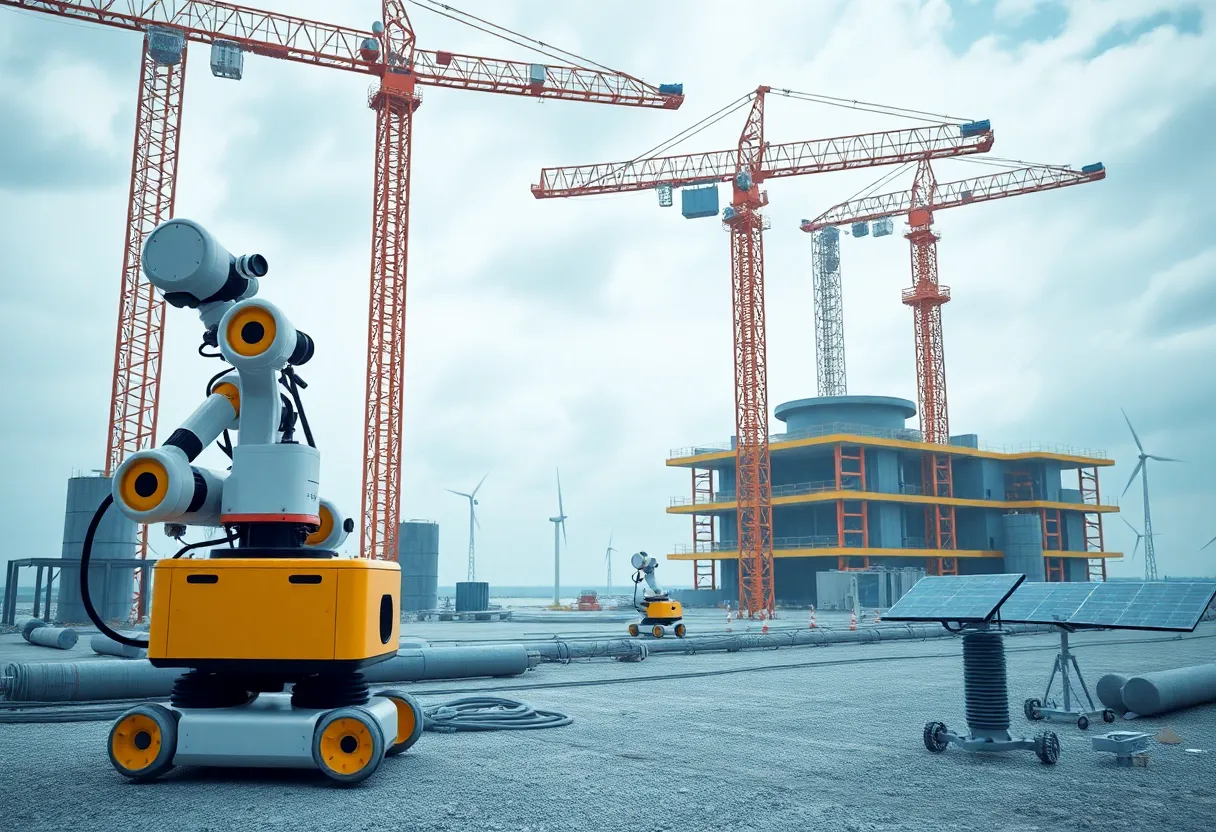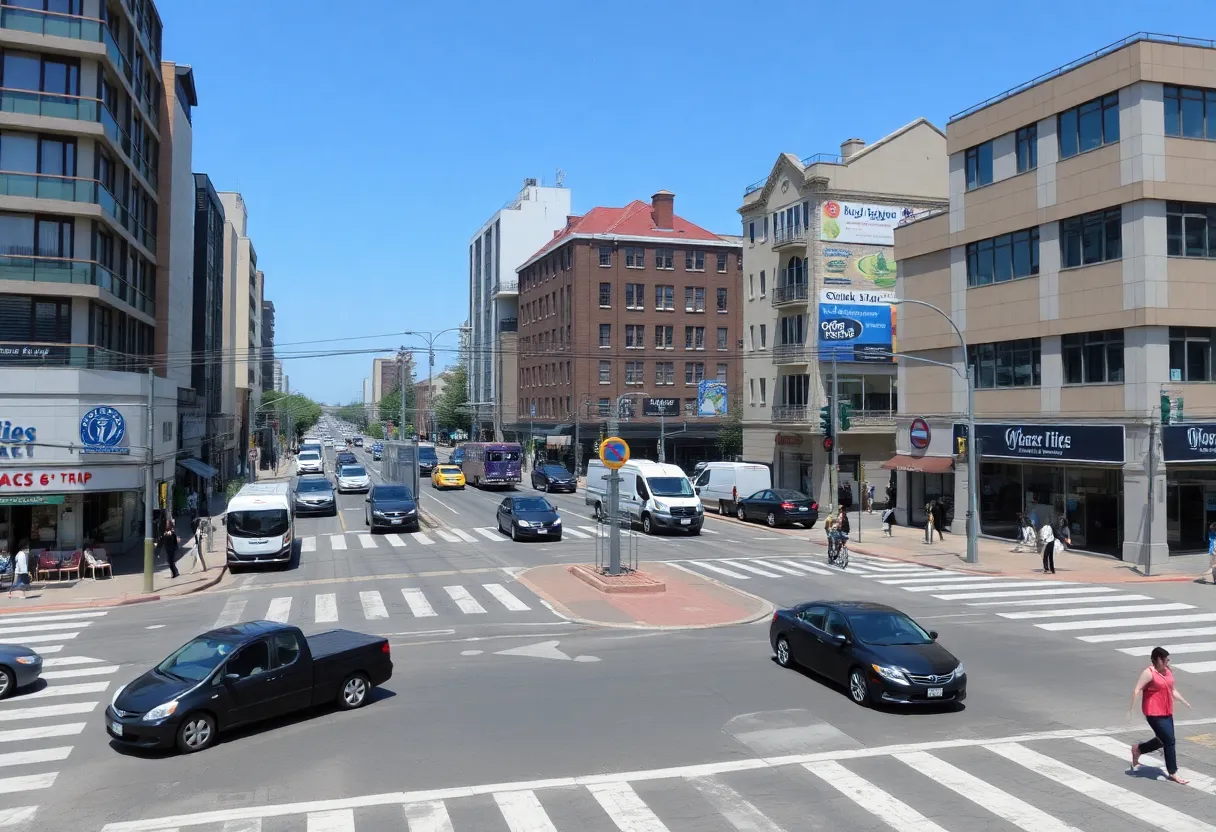Dallas, October 27, 2025
News Summary
Bechtel is driving innovation across energy, mining, infrastructure, and water recovery sectors with technologies like LEEDS, Crescendō, TNS, and Terafab. These initiatives aim to improve sustainability, efficiency, and safety while managing risks following a tragic construction accident at a Texas LNG terminal. The company emphasizes smart work practices and aims to tackle global challenges such as water scarcity and emissions reduction.
Dallas — Bechtel is advancing a suite of innovative technologies across energy, mining, infrastructure, and water recovery to address sustainability, efficiency, and safety challenges while continuing to manage project risks and an ongoing regulatory inquiry into a recent fatal construction accident.
Top developments and immediate details
Bechtel focuses on advancing breakthrough technologies to address critical challenges in energy, mining, infrastructure, and renewables. The company promotes smart, safe, and sustainable work practices through innovative solutions.
Water scarcity is one of the major challenges globally, which Bechtel addresses with its Low Energy Ejector Desalination System (LEEDS). LEEDS recycles industrial wastewater into reusable resources for agricultural and community use, presenting a sustainable alternative to traditional desalination. A pilot project for LEEDS took place in the Permian Basin in 2024, with plans for a small commercial facility to scale its capabilities.
Bechtel’s Crescendō technology, developed over nearly a decade with Purdue University, reduces energy use in HVAC systems by 5%. This technology captures and reuses energy lost in current HVAC systems, significantly cutting annual carbon dioxide emissions by over 400 tons. Crescendō eliminates the use of traditional vapor compression refrigeration, allowing for less toxic refrigerants or even carbon dioxide as a refrigerant. The commercial launch of Crescendō occurred at a cold storage facility in Dallas, Texas, maintaining temperatures from -20°F to 55°F. The cold storage facility is 364,422 square feet and used Crescendō to efficiently cool temperature-sensitive products.
Bechtel partnered with Extrakt Process Solutions LLC to commercialize TNS, a solid-liquid separation technology recovering valuable minerals from mining waste. TNS uses less water, is more cost-efficient, and operates successfully in high-clay environments, making it adaptable for mining applications. Pilot-scale testing of TNS in 2024 yielded strong results in hydrocarbon extraction and precious metal recovery.
Bechtel received a $5 million grant from the Australian Renewable Energy Agency to pilot Terafab, an automated digital field factory for solar plant construction. Terafab utilizes robotics to automate the handling and installation of large solar panels, enhancing efficiency and safety. Bechtel completed the Cutlass Solar 2 project in Fort Bend, Texas, ahead of schedule using a 100% digital delivery model. The Cutlass Solar 2 facility spans 1,100 acres, capable of generating 218 megawatts of power for approximately 40,000 homes. Nearly 500,000 bifacial solar panels were installed at Cutlass Solar 2, ultimately saving about 600,000 metric tons of carbon dioxide annually.
A tragic accident at a $13 billion LNG export terminal project in Port Arthur, Texas, led to the deaths of three workers due to a failure in the formwork system. Bechtel criticized the formwork bracket connection’s failure as being insufficiently secured during the last set-up of scaffolding. OSHA’s investigation into the accident is ongoing, with potential penalties and lawsuits filed by victims’ families still pending.
Supporting details and operational context
LEEDS is positioned as a lower-energy alternative to traditional desalination, emphasizing recycling of industrial wastewater for agricultural and community reuse rather than large-scale seawater desalination. The pilot in the Permian Basin in 2024 tested system performance in an industrial setting; the company plans a small commercial facility to scale capabilities and evaluate long-term operations and economics.
Crescendō’s development spanned nearly a decade in collaboration with Purdue University. The system’s 5% reduction in HVAC energy use is accompanied by claimed annual carbon dioxide emission reductions of more than 400 tons at the initial commercial site. The Dallas cold storage application covered product temperature ranges from -20°F to 55°F in a 364,422-square-foot facility built to validate performance under varied load conditions.
TNS addresses mineral recovery and tailings handling challenges in mining operations that face water availability and high-clay ore conditions. The pilot-scale results in 2024 reported promising outcomes for hydrocarbon extraction and precious metal recovery, while noting lower water usage and potential cost savings compared with some conventional separation methods.
Terafab’s $5 million grant from the Australian Renewable Energy Agency funds piloting of an automated digital field factory that uses robotics to handle and install large solar panels, aiming to speed construction, reduce labor risk, and standardize quality. The Cutlass Solar 2 project in Fort Bend, Texas, deployed a fully digital delivery model to complete construction ahead of schedule; its 218-megawatt capacity and nearly 500,000 bifacial panels contribute to the reported annual CO2 savings cited.
Safety, compliance, and regulatory status
The Port Arthur incident is the most serious safety-related development associated with these operations. The accident occurred at a $13 billion LNG export terminal project in Port Arthur, Texas, and resulted in the deaths of three workers. Bechtel has publicly identified the immediate mechanical failure as the formwork bracket connection’s failure and described it as insufficiently secured during the last set-up of scaffolding. Regulatory review by OSHA is ongoing and may lead to penalties; families of the victims have filed lawsuits, and those legal processes remain pending. Bechtel states that safety and compliance remain priorities across its operations while projects continue.
Background and broader significance
These technology pilots and commercial launches reflect an industry-wide push toward lowering energy use, cutting emissions, recovering value from waste streams, and improving construction productivity through digital automation and robotics. Water scarcity, energy transition needs, and supply-chain pressures are driving firms to test alternatives such as low-energy desalination, refrigerant alternatives, and automated construction systems. Concurrently, the Port Arthur accident underscores ongoing safety and oversight challenges on large, complex construction projects.
Frequently Asked Questions
What is LEEDS and where was it piloted?
LEEDS recycles industrial wastewater into reusable resources for agricultural and community use, presenting a sustainable alternative to traditional desalination. A pilot project for LEEDS took place in the Permian Basin in 2024, with plans for a small commercial facility to scale its capabilities.
What are the key outcomes of Crescendō?
Bechtel’s Crescendō technology, developed over nearly a decade with Purdue University, reduces energy use in HVAC systems by 5%. This technology captures and reuses energy lost in current HVAC systems, significantly cutting annual carbon dioxide emissions by over 400 tons. Crescendō eliminates the use of traditional vapor compression refrigeration, allowing for less toxic refrigerants or even carbon dioxide as a refrigerant. The commercial launch of Crescendō occurred at a cold storage facility in Dallas, Texas, maintaining temperatures from -20°F to 55°F. The cold storage facility is 364,422 square feet and used Crescendō to efficiently cool temperature-sensitive products.
What is TNS and what did testing show?
Bechtel partnered with Extrakt Process Solutions LLC to commercialize TNS, a solid-liquid separation technology recovering valuable minerals from mining waste. TNS uses less water, is more cost-efficient, and operates successfully in high-clay environments, making it adaptable for mining applications. Pilot-scale testing of TNS in 2024 yielded strong results in hydrocarbon extraction and precious metal recovery.
What is Terafab and who funded it?
Bechtel received a $5 million grant from the Australian Renewable Energy Agency to pilot Terafab, an automated digital field factory for solar plant construction. Terafab utilizes robotics to automate the handling and installation of large solar panels, enhancing efficiency and safety.
What are the details of the Cutlass Solar 2 project?
Bechtel completed the Cutlass Solar 2 project in Fort Bend, Texas, ahead of schedule using a 100% digital delivery model. The Cutlass Solar 2 facility spans 1,100 acres, capable of generating 218 megawatts of power for approximately 40,000 homes. Nearly 500,000 bifacial solar panels were installed at Cutlass Solar 2, ultimately saving about 600,000 metric tons of carbon dioxide annually.
What happened at the Port Arthur construction site?
A tragic accident at a $13 billion LNG export terminal project in Port Arthur, Texas, led to the deaths of three workers due to a failure in the formwork system. Bechtel criticized the formwork bracket connection’s failure as being insufficiently secured during the last set-up of scaffolding. OSHA’s investigation into the accident is ongoing, with potential penalties and lawsuits filed by victims’ families still pending.
Key features and project snapshot
| Feature | Detail |
|---|---|
| LEEDS pilot | A pilot project for LEEDS took place in the Permian Basin in 2024, with plans for a small commercial facility to scale its capabilities. |
| Crescendō commercial launch | The commercial launch of Crescendō occurred at a cold storage facility in Dallas, Texas, maintaining temperatures from -20°F to 55°F. The cold storage facility is 364,422 square feet. |
| TNS partnership | Bechtel partnered with Extrakt Process Solutions LLC to commercialize TNS, a solid-liquid separation technology recovering valuable minerals from mining waste. |
| Terafab funding | Bechtel received a $5 million grant from the Australian Renewable Energy Agency to pilot Terafab, an automated digital field factory for solar plant construction. |
| Cutlass Solar 2 | Bechtel completed the Cutlass Solar 2 project in Fort Bend, Texas, ahead of schedule using a 100% digital delivery model; the facility spans 1,100 acres and generates 218 megawatts. |
| Port Arthur incident | A tragic accident at a $13 billion LNG export terminal project in Port Arthur, Texas, led to the deaths of three workers due to a failure in the formwork system. |
Deeper Dive: News & Info About This Topic
HERE Resources
Dallas Fort Worth International Airport Unveils Major Digital Transformation
Texas A&M AgriLife Workshop on Fish Waste in Aquaponics
Baytown, Texas Welcomes Major Energy Boost
Data Center Boom in Dallas-Fort Worth Driven by AI Demand
Job Cuts in Texas: Indeed and Glassdoor Lay Off 1,300 Employees
IOWN Global Forum to Host FUTURES Event in Dallas
Texas Faces Water Scarcity Challenges Amid Growth and Data Center Expansion
Texas Financial System Overhaul through CAPPS STARR Project
Changes in the Texas Real Estate Landscape
Future of Texas Energy Takes Center Stage at Summit
Additional Resources
- Bechtel Innovation
- ENR: Bechtel Cites Error
- ENR: Texas Triple Fatality Photos
- McKinsey: Innovation at Bechtel
- Riviera: Bechtel EPC Contracts
- Wikipedia: Construction Accidents
- Google Search: Bechtel Innovation
- Google Scholar: Bechtel Technology
- Encyclopedia Britannica: LNG
- Google News: Bechtel

Author: STAFF HERE DALLAS WRITER
The DALLAS STAFF WRITER represents the experienced team at HEREDallas.com, your go-to source for actionable local news and information in Dallas, Dallas County, and beyond. Specializing in "news you can use," we cover essential topics like product reviews for personal and business needs, local business directories, politics, real estate trends, neighborhood insights, and state news affecting the area—with deep expertise drawn from years of dedicated reporting and strong community input, including local press releases and business updates. We deliver top reporting on high-value events such as the State Fair of Texas, Deep Ellum Arts Festival, and Dallas International Film Festival. Our coverage extends to key organizations like the Dallas Regional Chamber and United Way of Metropolitan Dallas, plus leading businesses in telecommunications, aviation, and semiconductors that power the local economy such as AT&T, Southwest Airlines, and Texas Instruments. As part of the broader HERE network, including HEREAustinTX.com, HERECollegeStation.com, HEREHouston.com, and HERESanAntonio.com, we provide comprehensive, credible insights into Texas's dynamic landscape.





